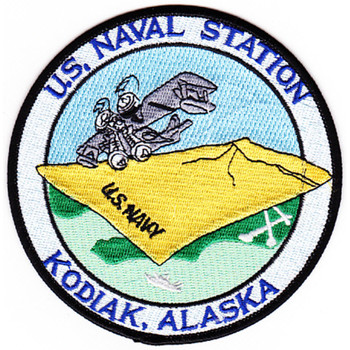Description
On the remote emerald shores of Kodiak Island in Alaska's unforgiving wilderness, a fortress of salvation stands sentinel against nature's relentless assault. This is the legendary Coast Guard Air Station Kodiak, where heroes take flight on missions that dance between life and death in some of America's most treacherous waters.
The station's story began in 1939 as storm clouds gathered across the Pacific. By 1941, as America entered World War II, Kodiak had been transformed into a critical launching point for PBY flying boats that would patrol the vast Alaskan frontier. But it was during the dark hours of 1943 that these aviators etched their names into the annals of American military valor, supporting the fierce Aleutian Islands Campaign to reclaim Attu and Kiska from Japanese occupation.
Picture the thunderous roar of engines cutting through Arctic winds as Coast Guard pilots launched into blinding storms and zero visibility. These were the forgotten warriors of America's northern frontier, men who flew through conditions that would ground commercial aircraft today. Their mission was clear but deadly simple: patrol the endless expanse of the North Pacific, hunt down enemy submarines lurking beneath icy waters, and rescue Allied personnel from the merciless grip of the Alaskan wilderness.
The waters surrounding Kodiak Island have claimed countless souls over the decades, from commercial fishermen battling the notorious storms of the Gulf of Alaska to military personnel whose aircraft went down in remote mountain valleys. Each rescue mission launched from this station represents a race against time, where Coast Guard crews push their helicopters and fixed-wing aircraft to the absolute limits of performance and endurance.
In the modern era, Air Station Kodiak continues this legacy of courage, deploying HH-60 Jayhawk helicopters and HC-130 Hercules aircraft on search and rescue missions that span thousands of square miles of some of the world's most hostile maritime territory. The station's crews have pulled survivors from sinking vessels in hurricane-force winds, located downed aircraft in whiteout blizzards, and delivered life-saving medical evacuations from locations so remote they appear on no civilian maps.
Every patch bearing the Air Station Kodiak insignia carries within its threads the weight of countless acts of heroism, split-second decisions that mean the difference between families reunited and empty chairs at dinner tables. It represents more than fabric and thread—it embodies the unwavering commitment of those who answer distress calls when others cannot, flying into conditions that test the very limits of human courage and mechanical capability.







